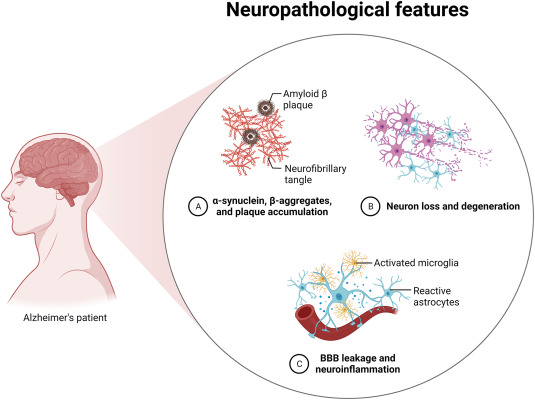
# Washington University Investigators Leading Development of Groundbreaking Vaccine Against Dementia
In a revolutionary initiative aimed at averting the development of Alzheimer’s disease and various forms of dementia, researchers at Washington University in St. Louis have received a $2.9 million grant from the National Institute on Aging. Their objective: to devise a pioneering vaccine that can prevent protein accumulation in the brain, which is significantly associated with these debilitating disorders—simultaneously circumventing the inflammation commonly linked to previous therapeutic attempts.
### Changing the Paradigm: Focusing on Prevention Over Symptom Management
Alzheimer’s disease and associated dementias are marked by the build-up of misfolded proteins known as amyloid beta and tau within the brain. As these proteins combine, they lead to increasing cognitive impairment, loss of memory, and neurological issues. While existing treatments primarily aim to dismantle these aggregates after symptoms emerge, researchers are shifting their focus to the earlier stage—stopping these accumulations from occurring in the first place.
This innovative endeavor is spearheaded by two prominent scientists from Washington University: Jai Rudra, PhD, an associate professor of biomedical engineering at the McKelvey School of Engineering, and Meredith Jackrel, PhD, an associate professor of chemistry in Arts & Sciences. By emphasizing early immune activation, their vaccine could feasibly safeguard at-risk individuals long before signs of dementia manifest.
### Utilizing Nanofiber Technology for an Enhanced Vaccine
A major advancement in their method involves the application of nanofiber platforms. Nanofibers are tiny fibers designed to deliver therapeutic particles or proteins in a precisely managed manner. They act as an efficient framework to present amyloid beta and tau proteins to the immune system, encouraging it to identify and neutralize these detrimental agents.
In contrast to conventional vaccine adjuvants—substances introduced to enhance the immune reaction—nanofibers do not induce inflammation. “Nanofibers possess distinct qualities that render them ideal for generating antibodies against tau and amyloid beta proteins, and they do not trigger inflammation like traditional adjuvants,” notes Dr. Rudra.
This differentiation is crucial, given that brain inflammation has posed a significant barrier in previous efforts to formulate dementia therapies. Potent adjuvants from earlier vaccine trials frequently led to negative side effects, undermining their safety and effectiveness. The nanofiber technology presents a viable alternative by engaging the immune system without inciting harmful inflammation.
### Vaccine Evaluation: Interdisciplinary Collaboration
The vaccine will be subjected to extensive preclinical trials in partnership with WashU Medicine experts Dr. Tim Miller and Dr. Kathleen Schoch, who are specialists in neurodegenerative research. Testing will be performed on transgenic mouse models that exhibit dementia-like symptoms as they age, allowing scientists to evaluate the vaccine’s effectiveness both as a preventative tool and as a treatment once symptoms surface.
Dr. Rudra emphasizes, however, that prevention might be the most successful approach. Once amyloid beta and tau proteins form aggregates, dismantling them becomes extraordinarily challenging. “Breaking them apart is going to be very difficult,” he warns, suggesting that vaccination may need to initiate as early as middle age—well before symptoms appear.
### Future Implications
If successful, this vaccine could signify a transformative change in our approach to Alzheimer’s and dementia treatments. By obstructing protein accumulation at the source, this research has the potential to eliminate or significantly lower the risk of cognitive decline for millions around the globe.
This cutting-edge research comes at a moment when there is increasing urgency to discover effective solutions for dementia. According to the World Health Organization, over 55 million individuals worldwide are living with dementia, with this number projected to more than double by 2050. Prevention-centered strategies like the one being crafted by researchers at Washington University may present a crucial breakthrough in addressing this impending public health challenge.
### Essential Insights
– Researchers at Washington University are working on a novel vaccine targeting amyloid beta and tau proteins—key players in Alzheimer’s and frontotemporal dementia.
– This strategy utilizes non-inflammatory nanofiber platforms to avert the side effects commonly associated with traditional vaccines.
– Early intervention may prove vital, with researchers advocating for vaccination to commence in middle age before the appearance of symptoms.
– This $2.9 million initiative has the potential to transform the battle against dementia, emphasizing prevention instead of addressing symptoms post-development.
### Terminology
– **Nanofibers:** Tiny fibers that serve as a platform to present vaccine elements to the immune system in a regulated way, mitigating inflammation.
– **Adjuvants:** Substances added to vaccines to enhance the immune response, although traditional adjuvants can sometimes lead to inflammatory side effects.
– **Tau and amyloid beta proteins:** Misfolded proteins that gather in the brain, forming toxic aggregates linked to Alzheimer’s disease and other forms of dementia.
—
Curious to learn more? Test your knowledge with